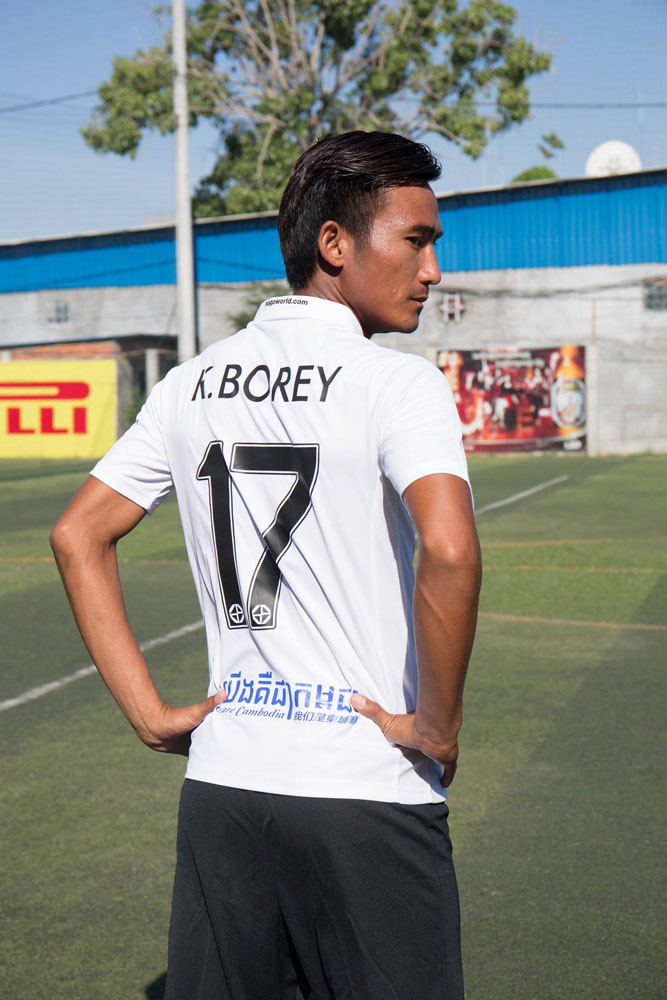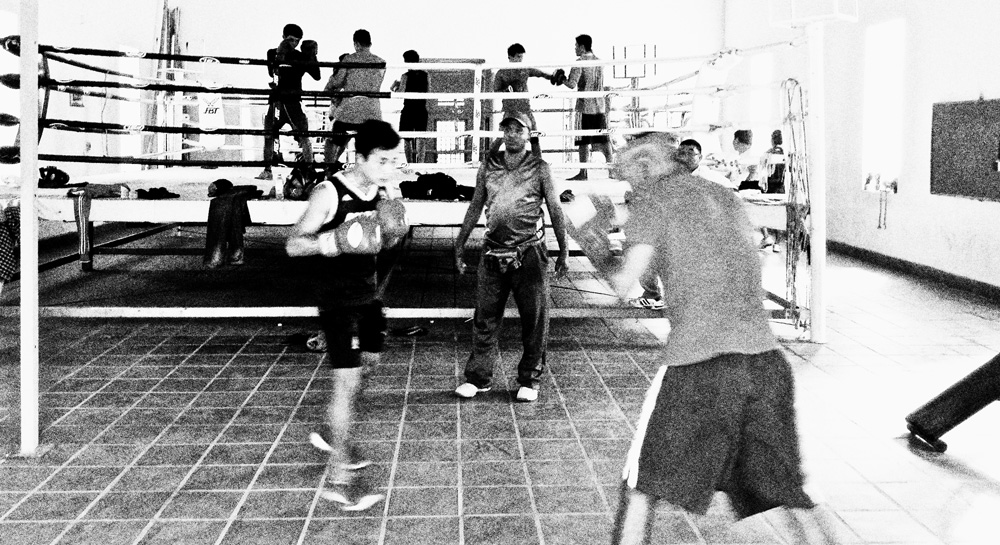
Asia’s largest mixed martial arts event is kicking open the doors for a new generation of Khmer fighters, but are they ready?
…..
US senator John McCain has likened the sport of mixed martial arts to human cock-fighting. And there is no denying its brutality. The point is, after all, to beat your opponent unconscious. Cuts, bruises, broken bones and concussions are common.
Like sex, violence sells – and sells big. In the span of a few short years, MMA has rocketed from relative obscurity into a full-blown worldwide sensation. The sport’s two largest promoters now dominate a global market worth billions.
Ultimate Fighting Champion, the industry leader, began in 1993 as a single event in the United States. UFC now beams regular pay-per-view shows to more than 130 countries in 22 languages. The company is reportedly worth upward of $2 billion, making it the most valuable sports franchise on the planet, surpassing the New York Yankees baseball team and Manchester United football club.
UFC’s Asian rival, the Singapore-based ONE FC, controls 90% of MMA markets across Asia. Through deals with ESPN, Fox and Star Sports, the ONE FC promotion broadcasts to more than 70 countries and counts more than a billion viewers. The sport hit Cambodian airwaves in early 2013, broadcasting on CTN affiliate MyTV.
Now, after 18 months of watching the brutal television spectacle, Cambodian fans will get a chance to see the real thing come September 12, when ONE FC arrives at Koh Pich Theatre with its multi-million dollar leviathan. Titled ONE FC: Rise of the Kingdom, the card comprises five international and five local bouts, including a four-man grand prix.
For Cambodian fighters and fight fans, the night offers a chance to finally bask in MMA’s big-money pomp and pageantry: at the global top end, the sport offers lucrative promotional deals, valuable sponsorships and jaw-dropping pay cheques. But down in the local trenches, where air-conditioned gyms are unheard of, the training is brutal, the paydays are meagre, and the modern world of fight science may as well be written in Martian.
Most importantly, the local matches guarantee a Khmer will win on a ONE FC card, something that has eluded the Kingdom’s fighters in five attempts so far. For the eight Cambodian fighters on the card, all of whom are making their ONE FC debut, it also means the biggest payday of their respective careers. Fighters are guaranteed $1,000, plus a thousand more if they win.
By contrast, big-name fighters in Kun Khmer, the Kingdom’s traditional kickboxing style, typically earn between $80 and $100 for local bouts and occasionally as much $200 or $300 for international matches. Local MMA fights pay better, around $150 regardless of outcome.
Yet as hefty as a $2,000 winning purse may appear, it pales next to the One Warrior Bonus, a whopping $50,000 cash prize awarded to any combatant who can suitably impresses ONE FC boss Victor Cui with his or her “warrior spirit”.
Oh, yes. Her. Girls fight, too.
“I can’t wait,” says Tharoth Sam, a 24-year-old female fighter known as Thalon Thon (‘Little Frog’), about her ONE FC debut. Sam trains at the Afighter Team gym, one of only three MMA clubs in the country. A native of Banteay Meanchey, Sam found her way to the cage after years of training in Bokator, the Kingdom’s traditional martial art, and fighting Kun Khmer.
“In Bokator, some girls think it’s too dangerous,” she says about fighting in the ring or cage. “But I wanted to use what I had from Bokator in a real fight, to see what I can do, to see how confident I am.”

The art of killing
The roots of Bokator stretch back to the time of King Jayavarman VII and the Angkorean Empire. History suggests that ancient Khmer dominance of Southeast Asia was due in large part to the Kingdom’s superior battlefield skills. The Angkorean army used Bokator in hand-to-hand combat, and the ancient discipline incorporated striking, weapons and ground-fighting techniques.
Bokator is widely believed to be the predecessor of modern Kun Khmer. Bas reliefs at the Angkor and Bayon temples depict warriors striking with elbows and submitting opponents with choke holds and arm locks. Proponents point to such carvings as evidence of the Khmer’s innate warrior heritage and, like Angkor itself, the art taps deep into the national identity.
Like many traditional martial arts, however, the true history of Bokator is shrouded in mystery and lore. If ever there was a written record, it disappeared during the Pol Pot regime.
A new Bokator began re-flourishing in the mid-2000s under the direction of Grandmaster San Kim Sean, the art’s most vocal evangelist. The grandmaster spent months canvassing the country in search of old teachers and new students.
Cambodia held its first modern Bokator championship at Olympic Stadium in September 2006. Practitioners mostly competed in forms and weapons demonstrations. Deadly battlefield techniques do not easily transition to competitive sport, the grandmaster says. What little actual fighting occurred took place on wrestling mats. Competition was confined to a large circle. Fighters wore traditional loin cloths, with only kramas wrapped around their heads and hands, no gloves. A drummer beat out hypnotic rhythms tracing the ebb and flow of the action.
Only men fought, and at the lower levels the fighting looked a lot like a schoolyard donnybrook. Competitors were often badly off balance and swinging wildly from the hips. Whatever claims Bokator makes to being a complete art, fighters were not allowed to compete on the ground for more than a few seconds. Even at the highest levels, the champions looked merely like novice Kun Khmer fighters.
That was admittedly the first year. But Bokator still has yet to establish itself as a viable combat style, much to the frustration of its supporters. “The ground fighting in Bokator is extremely weak compared to Brazilian jiujitsu and wrestling,” says MMA fighter Antonio Graceffo, who holds a Bokator black krama (equivalent to a black belt in other disciplines). Jiu jitsu and wrestling have heavily influenced the ground-fighting styles of modern MMA. Bokator supporters believe that, with proper training and support, their art could hold its own against those disciplines. And among the faithful, there still smoulders the dream that someday soon Khmer fighters and the Bokator style will take their rightful place among modern mixed martial arts.
Little Frog, for one, is not giving up. “Some people say that Bokator trainers can only dance and perform, that it’s not for real fighting,” she says. “Those kinds of words motivate me. I’m going to show those people: Bokator is not just for dancing, not only just for performing; we can fight, too.”
A boy from Brooklyn
Chan Reach was born in the US to Cambodian parents on 13 June 1988, and grew up in Brooklyn. Raised by his grandmother and an uncle, Reach doesn’t remember a time when he wasn’t involved in the fight game. He began training with his uncle at an early age, started fighting Kun Khmer around 16 and moved into wrestling then jiu jitsu and MMA after that.
As he grew older, Reach made regular visits to the Kingdom. He moved permanently to Cambodia in December 2012, taking the position of head trainer at the newly formed Afighter Team gym in Phnom Penh. He is one of four fighters in the ONE FC grand prix.
“When I was in the States, I always wondered: Cambodia, we have fighters, we’re freakin’ born fighters. Why don’t I see enough Cambodians in MMA?” he said. “As a matter of fact, I didn’t see any at all. So I decided to just quit my job, leave everything behind and come here to bring MMA to Cambodia.”
Reach was not alone in his ambitions and, when he landed, Dave Minetti at the K1 Fight Factory was busy with similar ideas, too. The former French legionnaire was looking for Khmer fighters to train in MMA striking and grappling. He was drafting rule books, designing logos and collaborating with Vath Chamroeun, secretary general at the National Olympic Committee, to create an official MMA governing body.
There were others, too. Across town at CTN, the station’s well-known head of sports, Ma Serey, had been trying for years to get Bokator on television. He had even run a few untelevised dress rehearsals, but there simply weren’t enough quality fighters to make weekly bouts viable.
Encouraged by his general manager and backed by the station’s powerful owner, Kith Meng, Serey was now pushing to get MMA onto his airwaves. But almost nothing was going his way.
“I contacted Bokator,” said Serey of those early forays. “But Vath Chamroeun said it was impossible. ‘We cannot do it because there is a lack of fighters. We cannot find fighters for every week.’”
He spoke next with the president of the Cambodian Boxing Federation, the influential body that oversees Kun Khmer and professional and amateur boxing. “I went to see Tem Moeun, but he also refused. He was afraid of Bokator, of Vath Chamroeun, because MMA is not under his responsibility; he’s only Kun Khmer.”
With no fighters or sanctioning body, Serey was stuck. The others were facing different but seemingly impossible challenges, too. Over at K1, Minetti, who was now technical director of the newly established Cambodian Mixed Martial Arts Association, was short on quality students. And while Afighter Team had managed to attract a dozen or more brand-name Kun Khmer fighters, converting them to MMA was proving more time consuming than originally planned. But none of that mattered, because for all the men’s efforts, without a sanctioning body, without rules and referees, fighting was exactly what Vath Chamroeunsaid it was: impossible.
Quitting, however, wasn’t really an option. “‘Bong Serey, We must do it,’” implored the station’s General Manager Pol Vibol. “’I like it. Even the oknha [Kith Meng] likes it and supports us and wants this to happen. You must make it happen.’”
In previous years CTN had found success with a reality series called Kun Khmer Champion. The show pulled 16 fighters together to live and train. Through regular bouts, the pack was whittled down to two final contenders, with the winner of the ultimate match crowned the season champion.Serey put out an open call for fighters and quickly gathered two-dozen strapping young men in three weight classes: 57, 60 and 65kg.He modified the show’s format to cater for cage fighting and called it Kun Khmer Warrior Champion. To kick off the inaugural season, CTN scheduled two international cage fights as part of the station’s massive 10-year anniversary celebrations at Koh Pich.
Behind the scenes, however, negotiators at CTN and the newborn CMMAA had failed to reach consensus over referees and sanctioning fees. Tem Moeun and the Boxing Federation, sensing a second chance, quickly stepped in and agreed to sanction the bouts.
So on the night of 8 March 2013, Serey stood in the middle of a six-sided ring – a full cage couldn’t be built in time – and delivered an elaborate explanation of the new sport to thousands of onlookers. Not once did he mention MMA.
Backstage, Chan Reach wrapped the hands of Say Teven. Beside him, Little Frog offered words of encouragement. But both knew – in fact, everyone knew – that the two Cambodian fighters were heading towards near-certain defeat.
Minutes later, Chuth Chunlee tapped under a barrage of punches from the mounted position at 3:42 in the first round. Teven, a durable veteran from Siem Reap, made it to the second stanza, when he tapped to an arm bar with 1:15 left. Quietly people complained, but few dared openly criticise Serey or CTN.

Fight club
The Cambodian MMA Association officially launched four days later with a small press conference on the second floor of the National Olympic Committee building. If the pre-launch CMMAA remained muted in its opposition to ‘unsanctioned’ MMA bouts, the officially stamped CMMAA was loud and unequivocal: nothing regarding MMA could happen without the CMMAA’s express approval.
The position put the newfound sports body and CTN on an inevitable collision course. After the station announced a second international MMA card just weeks later, tensions simmering behind the scenes boiled into public view.
Dave Minetti, now the CMMAA’s technical director, fired off a missive blasting the event and warning those involved. “[The] CTN MMA show is an illegal event,” Minetti said. “[CTN didn’t] get CMMAA approval. They don’t respect MMA rules. Their referees and judges are untrained and not qualified. The CMMAA will not allow any fighters who compete in CTN’s event to fight on any CMMAA official show or The ONEFC.”
Tough rhetoric, but on the ground the words had little effect. For one, boxers are rarely involved in decisions regarding their opponents. They fight who, when and where their trainers tell them. Further, active Kun Khmer fighters had little reason to fear the CMMAA because Kun Khmer falls under the protective wing of the Cambodian Boxing Federation, which had a long and close relationship with CTN. But most importantly, the television station had one important thing that the newly formed MMA body did not: money. For all its big aspirations, the CMMAA was operating with a near non-existent budget. And without purse strings to pull, everyone knew its words would be difficult to enforce. Im Ouk, owner of the Afighter Team, echoed what many at the time were thinking. “The CMMAA doesn’t have any clubs or any professional fighters,” he said. “All they have is their association, which I see has no credentials in this sport.”
Still, the division between the two heavyweights would cast long shadows. Without the support of Vath Chamroeun, a former Olympic wrestler who was tightly aligned with the National Olympic Committee and the Wrestling Federation, CTN would have no wrestling coaches or wrestlers among its development programme. And because of their excellent skill at controlling action on the ground, wrestlers represented perhaps the finest pool of talent from which to develop new MMA fighters. “The hardest part in this sport,” Ouk lamented, “is the politics.”
Ready to rumble
Nearly 1,000 people packed the CTN stadium in Russey Keo in anticipation of Cambodia’s international MMA debut. The first two matches held in the WWE-esque, six-sided ring at Koh Pich were easy to dismiss as test fodder. “That was just a sample,” Serey said. Tonight, the home team would shine. And Serey and CTN would silence the doubters.
To head off criticism of ‘untrained’ referees, the station hired veteran UFC third man Marc Goddard to workshop with local officials and oversee action during the night’s most important bouts.
For opponents, the station brought in three fighters each from South Africa and the UK. Perhaps hedging his bets, Serey matched the foreigners against three up-and-coming MMA fighters and three seasoned Kun Khmer fighters.
Only Tok Sophorn from Afighter Team won. The other five got bludgeoned. In the second fight, Sam Angdun lay motionless for a full 90 seconds after getting KO’d at 2:26 in the first round. The third bout ended in just 63 seconds. To the horror of everyone, the same storyline unfolded again and again all night long.“ My job is to take them into deep water,” said Goddard after rescuing Kun Khmer veteran Pich Arun from a first-round thrashing. “But I don’t want to drown them. He was clearly a fish out of water.”
If the Koh Pich bouts could be written off as a test run, these six fights, under the critical eye of fighters and genuine fans, could not. The assault on national pride was immense, and the blowback came hard and fast like an elbow to the teeth. “That show was kind of sad,” Ouk said. “I knew our Khmer fighters were better than that. All they needed were proper training and better support.”
The Phnom Penh Post described the night as “shambolic”. Minetti labelled it “ridiculous”. Vath Chamroeum took to the local papers and publicly demanded the suspension of CTN’s programme, calling the bouts “unsanctioned”. Hem Thon, administrative director of the National Olympic Committee, said the fights must “be halted”.
Serey was under the gun, and anger seethed at the highest levels of government. “The Ministry of Youth and Sport called me,” he said. “They said: ‘Serey, you must stop doing this because it’s dangerous. We are not happy. Cambodians are not happy. You brought good fighters from overseas to beat Cambodians in our own house.’”
What Serey had envisioned as a crowning achievement turned into a nightmare. But he wasn’t about to give up. Sure, the sport was new to him, he said, and he was still learning its nuances. Sure, he underestimated the strength of the foreign opponents and, just as mistakenly, overestimated the ability of his own fighters. But losing was better than not trying at all. Not trying was giving up. And Serey was not about to do that.
So back he went to the Ministry of Youth and Sport. “I said to the ministry: ‘How long do we wait? If you start right now, I think it will take 10 years for our fighters to be strong. If you say now we cannot do it and we must wait for 10 years more, that means we will wait until 20 years.” The ministry relented. “They let me do it,” Serey said. “They knew I was right.”
Little Frog
Little Frog got her first taste of martial arts when a friend invited her to the Bokator national tournament in 2007. “The first time I saw it I really liked it. I asked my friend: ‘How can I train? Do they allow female students?’” They did, so Little Frog began training. She was a natural. “When I was young, I really loved sports,” she said. “I played football with the guys and stuff like that. I love the challenge.”
She entered the national tournament a year later and brought home one silver and three gold medals, all in forms and demonstration categories. Winning was euphoric. She was hooked.
In the ensuing years Little Frog has become Bokator’s leading female practitioner and now she’s among the art’s most active evangelists. Bokator has taken her to Japan, South Korea, Vietnam and the Czech Republic, and she’s among the sport’s most ardent ambassadors.
In 2012 she represented Bokator at a regional martial-arts conference in Ho Chi Minh City, where organisers asked the girls to join a beauty pageant. “I didn’t trust myself,” she said. “I didn’t think I could do that because I love to dress up like a tomboy. I don’t know how exactly to walk or do girly stuff. I jumped in because I wanted to get the Cambodian name to compete with them, too.”
She got first runner-up, but being a beauty queen was never the goal. Fighting was. So in more recent years she has diversified her styles, adding some wrestling and Vovinam, Vietnam’s traditional martial art, winning medals in both. Two years ago, she began fighting Kun Khmer in earnest.
“Every time they call me and ask ‘Do you want to fight next week?’ I say ‘Yeah, OK. Put me in the ring.’ One day I am going to fight in an international competition. If I want do that, first I have to be the best in Cambodia.” In 10 fights she has won six – three by technical knockout – and lost four.
If her parents were proud, they were also worried; mostly about her safety, but social pressures weighed on them, too, especially her mother. “She was really worried about me, because, you know, I’m a girl. And she wants me to stay home like a normal girl, take care of my parents, be a nice girl and stuff like that.”
Even though she never told them about her desire to fight, the intuition of Little Frog’s parents kicked in early on. “From the beginning, when I started Bokator, they complained about it,” she said. “They said: ‘Don’t fight. If you train for fun it’s OK, but please don’t fight.’”
The more she trained, the better she got. And the better she got, the more she wanted to train. And the more fraught her parents became. “We had some arguments, too. I said: “Come on, Mum; I’m not doing anything bad. I spend a lot of time on this because I want something more. I want to be the best. I want to be on the top.”
After she lost two consecutive fights, her mum begged her to quit. “She was crying, she was complaining, complaining, complaining every day. That put a lot of pressure on me.” Still, Little Frog couldn’t live with herself if she gave up on her dreams. “Sometimes they really get tired of giving advice to me. Sometimes they stay quiet. But they are sad. And I am sad, too, because I made my parents like this. But I don’t know. I still keep fighting.”
Bright lights
For now, at least, the prospects of the big-time stage have everyone lining up for success. ONE FC seems to have navigated the local waters well: they’ve included everyone and offended no one. Fighters from every club will make an appearance on fight night, CTN will handle local broadcasting and CMMAA will sanction its first official bouts.
Longer term, ONE FC could open doors that have long been shut to Khmer fighters. The pinnacle of a local champion’s career would be marked by a few fights against foreigners for a couple hundred bucks. The Cambodian game has never had international connections and, for the best in the country, the prospects of fighting beyond the local stage were typically zero.
ONE FC now offers a gateway to the world. To get through those doors, though, fighters will have to start winning. Considering the current level of the local sport, which is just barely a year old, there is still much distance to travel. “Our goal now is to look after the younger Khmer fighters because they will be the future of MMA in Cambodia,” Ouk said.
That future begins on September 12 and, no doubt, future MMA stars will one day look back on the local debut of ONE FC with nostalgia and pride. And all the obstacles everyone faced to make MMA happen in Cambodia will seem worth it.
WHO: Khmer Warriors
WHAT: MMA cage fighting
WHERE: Koh Pich Theatre
WHEN: 7pm September 12
WHY: There are few sporting spectacles more exciting than a prize fight
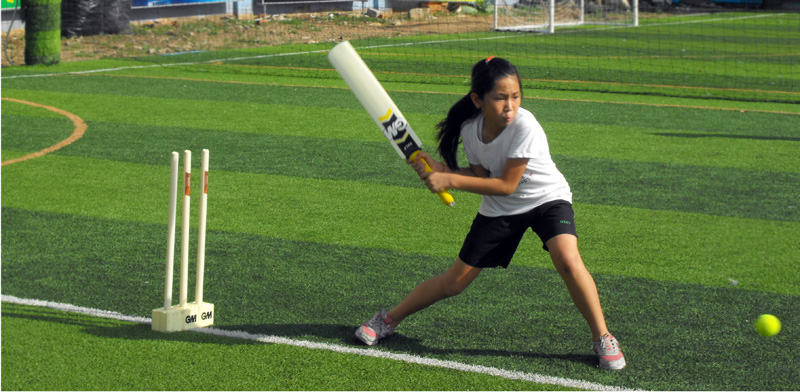
We’ve all watched those feel-good Hollywood movies: a motley crew comes together under a new coach to beat the odds and win the neighbourhood/state/world championship. They are the underdogs, laughed at by their peers, but with enough enthusiasm and energy to put a smile on anyone’s face. Remember Cool Runnings, the Jamaican bob sled team, or The Mighty Ducks, a rag tag neighbourhood hockey team? Well, I believe I have found Cambodia’s very own – and what a happy bunch they are.
The Phnom Penh Cricket Club is made up of a large group of seven- to 16-year-old boys and girls in all shapes and sizes. The team is made up entirely of kids from local schools who come together every weekend to spend two hours training at a local sports ground. Equipment consists of junior cricket bats, some stumps and a tennis ball. What else does one need, really?
To create a sense of belonging, and to deal with the short attention span of Gen-Z (or whatever generation the current juniors are), teams have been formed with cool names like the ‘Warriors’, ‘Ninjas’ and ‘Dragons’. Each team has players with varying skills, and as I have found out over the last few weekends, there are some great personalities on the field.
It’s really heartening to see so many girls participating, often outplaying the boys with ‘classic catches’ and real patience when batting. Last week there was a young girl, no taller than a bicycle, and boy could she bowl. Dead straight and no bend in the elbow – who would have thought?
There are little pocket rockets who play plenty of wild swings, throw their bat in frustration and support their team mates louder than professional cheerleaders could. Perhaps it’s their rayon Angry Birds matching t-shirt and shorts combination that gets them so worked up. Older boys in their low hanging skinny jeans and rapper hats also join in, pulling their pants up as they run between wickets. Technique is secondary to enthusiasm. Baseball swings and sling-shot bowling… who cares? They love it.
Their coach, and the organiser of the team, is a Hong Kong-based cricket fan who spends 20 days a month in Phnom Penh as part of his passion for developing cricket in Cambodia. Cricket Cambodia is now a member of the Asian Cricket Council, which is an achievement in itself. Assisting him are a team of volunteers including one of the dads and a young Cambodian fellow who religiously wears his cricket whites every week.
The inaugural Phnom Penh Cricket Tournament will be held later this month with the final on June 30 held at the old (Army) stadium, the culmination of a two-day round robin event where all six teams will participate. Anyone can watch and cheer the teams on; I’ll certainly be there.
WHO: Anyone with a penchant for sticky wickets
WHAT: Inaugural Phnom Penh Cricket Tournament
WHERE: 3G Sports Centre, National Assembly Street, opp. Australian Embassy (June 29); & RCAF Stadium, north of Chroy Changvar Bridge roundabout, Russei Keo (June 30)
WHEN: 1-4pm June 29 (3G) and 9am-5pm June 30 (RCAF Stadium)
WHY: “I tend to think that cricket is the greatest thing that God ever created on Earth – certainly greater than sex, although sex isn’t too bad either.” – Harold Pinter
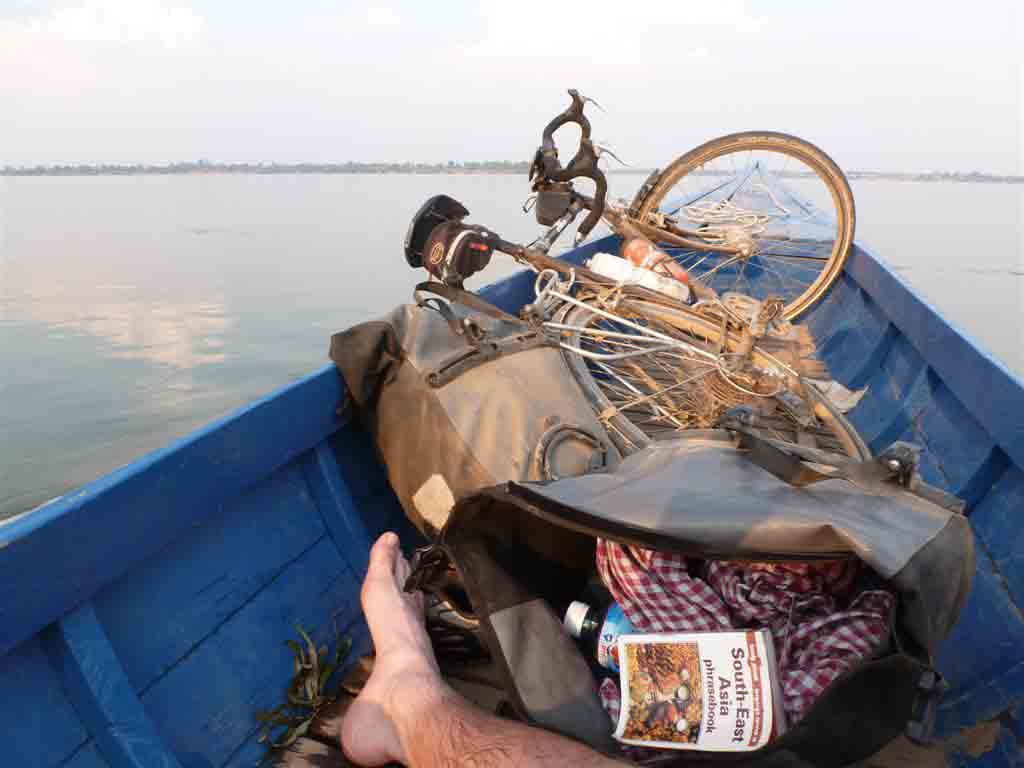
One thing Freddie Mercury and I have in common is that “I want to ride my bicycle; I want to ride it where I like.” And I can. Kind of. Liberating as the freedom and low-maintenance of bicycle ownership is it puts the rider on the bottom rung of Phnom Penh traffic’s pecking order. Imagine being a tadpole in a tank full of sharks, except that the sharks spit dust and black smoke in your face.
As it turns out, you don’t have to get on a slow moving, nausea-inducing bus to feel the uninterrupted joy of moving through the world at your own pace. Instead, become one with your bicycle in the ultimate marriage of man and machine, and have the scenery grace your eyeballs as you speed through, in it but not of it. Because when endorphins, adrenalin, serotonin and dopamine flood your nervous system, the last thing you want to feel is the shove of an angry Lexus.
There is a place – 20 minutes by boat from the docks near Dreamland – that King Sisowath Monivong called home during the Japanese invasion of 1940 and is now known as Areykhsat. This is where Chan-La, Ratana and Tonet were born, raised and live.
The three met when Chan-La and Ratana were growing up in Sovannaphum Care Orphanage where Tonet often volunteered to look after the kids. At 18, Chan-La left to attend public school and Ratana left to begin work. The three stayed in touch throughout and, after a year of preparation, have just launched Areykhsat Bike Adventure.
The idea is not only to show folk how beautiful rural Cambodia is, but also to give back to the local community. The latter is such a part of Chan-La’s modus operandi that he spends 15 hours a week volunteering as an English teacher in a nearby school. Profits go directly towards helping orphaned local children: “Especially those kids who don’t have the opportunity to go to school,” says Chan-La, who, along with his co-founders, has already taken in three such orphans and hopes to care for more as the business expands.
Going beyond the aesthetic experience of most eco-tours, they teach people about the area they know like the backs of their hands. This includes a temple whose gate is guarded not by tigers or nagas, but by eight-foot-tall shrimp. The tour also goes through fishing villages and farms so folk can “meet villagers, see farming, see fishing and try traditional food”. Then comes a trip across Areykhsat lake in a traditional boat as fishermen haul in the day’s catch.
As we stand on a Buddhist crematorium overlooking the largest lemongrass farm in Southeast Asia, Chan-La pauses for thought. “Most foreigners don’t have a chance to see something like this,” he says. That’s just the thing, though. Now we do. To book a tour, call 097 7659477.
WHO: Areykhsat Bike Adventure
WHAT: Bicycle tours
WHERE: Areykhsat, Kandal province
WHEN: Every day
WHY: Explore Cambodia at a civilised pace

The life of Carlos Ray ‘Chuck’ Norris is an action-packed one, spanning everything from military service and martial arts to action films and serving as the inspiration for thousands of satirical factoids about his heroic feats. In between pounding the Republican campaign trail and promoting everything from home fitness equipment to World of Warcraft, the ultimate tough guy has even stamped his boot print on Phnom Penh.
Shy and bullied as a boy, Chuck’s worldview underwent its first blistering punch to the jaw while he was serving in the US Air Force in the late 1950s. His time in Korea was spent not drinking Soju and whoring, but rather studying the indigenous Tang Soo Do martial art. Eventually he returned to America complete with black belt, established Karate schools throughout the country, and put all he had learned into founding his own system of Chun Kuk Do (‘The Universal Way’), which mixes Eastern and Western fighting techniques (Norris later made history by becoming the first man from the Western hemisphere to achieve an Eighth Degree Black Belt Grand Master ranking in Tae Kwon Do).
By the late 1960s, the martial arts career of this icon-in-the-making was an unstoppable hurricane of roundhouse kicks, but even that wasn’t enough to feed the beast inside. It was about this time that Norris befriended Bruce Lee, who launched his acting career by casting him as the villain in Way of the Dragon. Like a meteor, Norris ascended into the stratosphere of film where he has remained for more than half a century: he has more than 40 films, 23 starring roles, and a television series, Walker Texas Ranger, which ran for eight and a half years, under his belt. When not busy clobbering opponents, he was writing books on martial arts and Zen; two autobiographies and two Wild West novels – although legend has it Norris didn’t ‘write’ those books; the words simply assembled themselves out of fear.
After the cancellation of Walker, Texas Ranger, he seemed to fall from the limelight, but Chuck Norris doesn’t sleep; he only waits. With the success of US talk show host Conan O’Brien’s Walker Texas Ranger lever (which, when pulled, shows comedic out-of-context clips from the show), and the explosion of Chuck Norris internet facts, this god-made man arose once more – and immediately wrote an ‘official’ Chuck Norris facts book, just to set the record straight.
It has long been suggested that The Great Wall of China was built to keep Chuck Norris out, but failed miserably. Today, the man voted Top Dudeliest Dude by Maxim magazine in 2007 is at least partly responsible for bringing Dim Sum and, for authenticity’s sake, a Chinese Dim Sum chef to Phnom Penh’s Golden Sorya Mall. Inspired by the illustrious icon, American ad executive Mike, a Michigan native, last month opened the Chuck Norris Dim Sum restaurant/bar, where Eastern discipline meets the free spiritedness of the Wild West.
The restaurant will later this month be throwing a Chuck Norris party complete with Shake-weight contests, in which challengers shake a device shaped like a dumbbell six inches from their face to obtain strength and vigour; a spicy food-eating contest, where victory goes to whoever can ingest the most Chinese mustard in one sitting; martial arts-style board-breaking contests, and more (details in our next issue). In the meantime, remember: where old meets new, where East meets West, you will find Chuck Norris Dim Sum.
WHO: Chuck Norris disciples
WHAT: An ass-kickin’ restaurant launch party
WHERE: Chuck Norris Dim Sum, Golden Sorya Mall, St. 51 (between Heart of Darkness and Pontoon).
WHEN: To be confirmed (Watch This Space)
WHY: Chuck Norris roundhouse kicks people in the face first and asks questions later
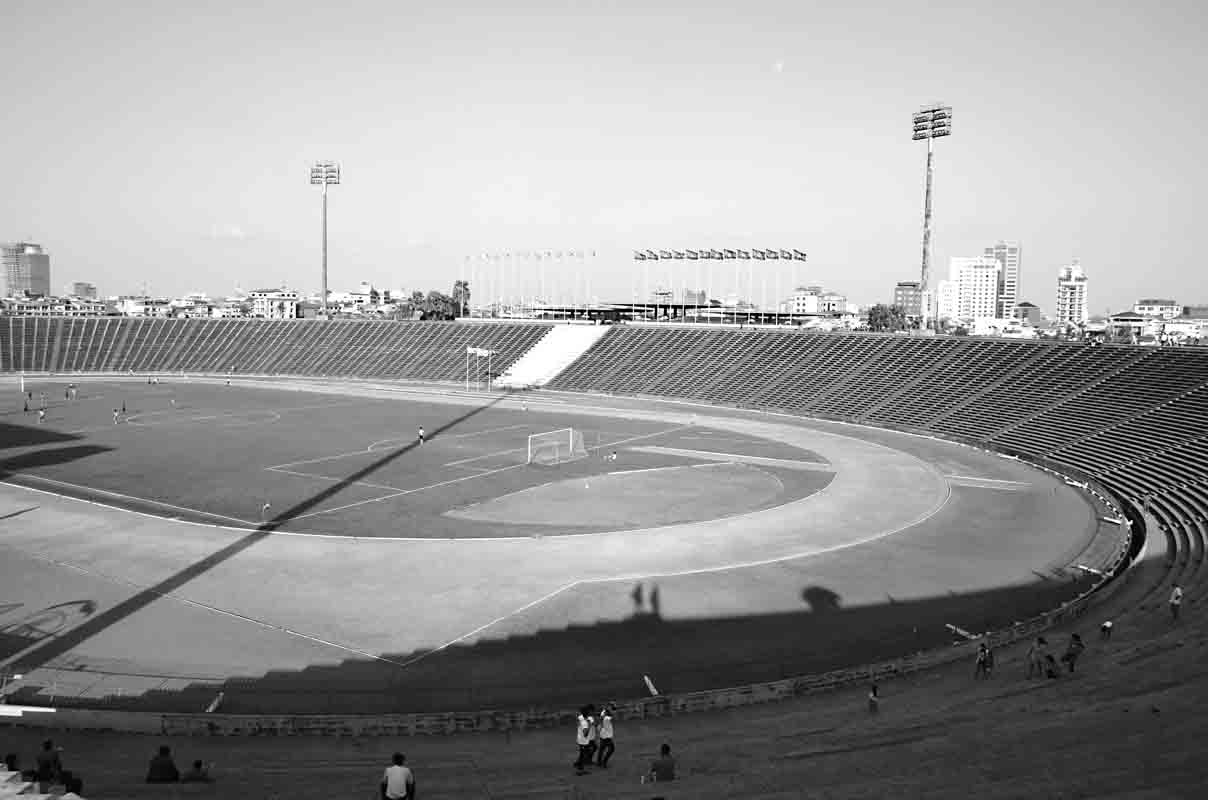
It isn’t just Ty and his football team who are concerned about the mooted development of Phnom Penh’s Olympic Stadium. A cathedral to Khmer creativity, the sports complex is a place of pilgrimage for photographers, students, architects and enthusiasts, as well as the myriad joggers, wrestlers and petanquers who make use of its facilities. A perfect marriage of form and function, the structure and its future are as much a matter for sportsmen as they are for urban planners.
Commissioned by Prince Norodom Sihanouk in the salad days of Cambodian independence, the complex was a concrete metaphor for the kingdom’s post-colonial rebirth. At the 1964 opening ceremony, Prince Sihanouk assured his subjects: “We have certainly shown the world that we are not a bastard nation deprived of intelligence, courage and energy, as the enemies of our people and our country have often pretended. Despite the criticism and slander of some of our neighbours and their imperialist masters we have proven our capacity to transform our ancient kingdom into a modern nation.” Stadium architect Vann Molyvann, interviewed by The Wall Street Journal in 2010, remembered that night as “one of the greatest moments of my life”.
Out of this newfound hope and confidence rose New Khmer architecture, a uniquely Cambodian interpretation of architectural modernism, combining slick Le Corbusian esotericism with Khmer guts. Typified by natural lighting and ventilation systems, Angkorian irrigation features, and streamlined vernacular motifs, the style works in harmony with the meteorological extremes of its birthplace. From social housing in Bassac to the (now demolished) Council of Ministers, Sihanouk and Molyvann, the urbane prince and the Sorbonne-educated architect, used New Khmer architecture to transform the city from a sleepy riparian outpost into the modern capital of a country on the ascendant.
But the halcyon days were short. From 1975 to 1979 the outlying sports fields were turned into cabbage patches and Khmer Rouge cadres marched through the arena. The complex fell further into desuetude during the decades of civil strife and occupation; it was only in 2000 that the site was returned to something resembling its former state by a Taiwanese firm, who revivified the stadium on the condition of their entitlement to develop pockets of the periphery for commercial use.
Recently, rumours surfaced claiming that the regeneration was poised to leap from ‘development’ to demolition. While these unconfirmed reports have been energetically refuted by the city Municipality, there’s no denying that the complex is about to undergo a radical make-over, with a cluster of skyscrapers – one 55 storeys high – set to rise up over the low-slung skyline. And despite intentions to protect the stadium, the encroaching development is rumoured to have sorely compromised water run-off, leading to the flooding of surrounding roads and the weakening of the structure’s foundations.
For Dr Dougald O’Reilly, founder of non-profit Heritage Watch International, the rapid reimagining of Phnom Penh’s cityscape has wide-ranging ramifications for inhabitants. “Filling in blank spaces with skyscrapers is ill-advised. The architectural landscape of Cambodia is a testament to the dramatic history of the country stretching over thousands of years. It would be unthinkable to tear down Tuol Sleng and the same should be said of more recently built jewels of Khmer ingenuity. There is a need to develop Phnom Penh, but a crucial part of that development should be an attempt to keep the city liveable and attractive.”
These jewels of Khmer ingenuity are some of the city’s best kept secrets, overwritten by the new face of new Phnom Penh. The architecturally curious are catered for by Khmer
Architecture Tours, who run fortnightly excursions to post-independence buildings such as
Vann Molyvann’s sleek Royal University complex and the stately 1960s villas of Tuol Kork, as well as regular guided walks of Olympic Stadium. The tours provide an opportunity to see the crumbling structures before they sink below the glass and chrome shards of
architectural progress.
As Ty and his teammates kick up and down the Olympic scale football pitch, the echoes of construction bounce off the bleachers. The stadium may have been reprieved for now, but development forges onwards and defiantly upwards on every side.
WHO: Khmer Architecture Tours (ka-tours.org)
WHAT: Guided walks of Olympic Stadium and other architectural gems
WHERE: Around Phnom Penh
WHEN: Fortnightly
WHY: You don’t know what you’ve got ‘til it’s gone
